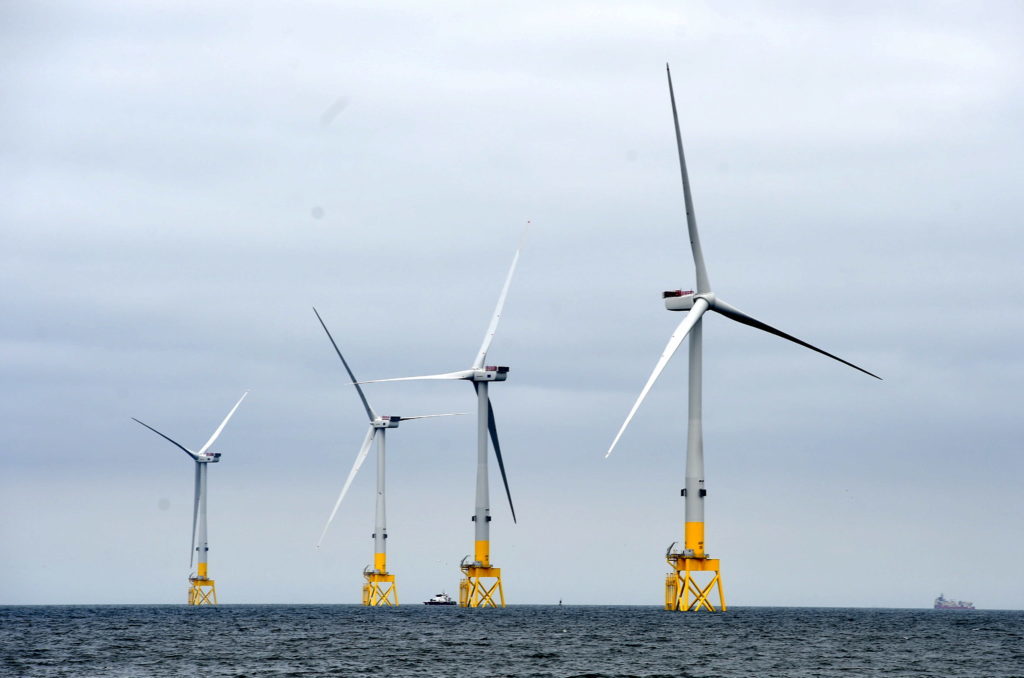
The last couple of weeks have been busy ones for the offshore wind sector in the UK.
On September 19, the Crown Estate launched leasing round four for offshore wind developers focusing on the seas around England and Wales.
The next day, the government announced the winning bids in its auction for revenue support instruments known as Contracts for Difference (CfD), with five offshore wind projects bidding successfully.
The CfD mechanism protects less mature renewable electricity generation projects which need revenue support from volatility in wholesale power markets.
CfD winners get a fixed strike price for every megawatt per hour (MWh) they supply to the grid.
If the wholesale market reference price for electricity during a period is lower than the strike price, generators receive a top-up payment.
But if the market reference price is higher than the strike price, generators must pay back the excess.
When an allocation round is oversubscribed, generators must submit sealed bids containing strike prices they could accept to underwrite their project.
Last month’s round saw a record low strike price in the UK for offshore wind of £39.65 per MWh.
If the forecasts are correct, wholesale electricity prices will, over the contract term, be higher than the strike prices resulting in a neutral or even negative position in respect of total expenditure of subsidy under those contracts.
The strike prices represent a reduction in subsidy of offshore wind by about 66% in the five years since the CfD system was introduced.
If the contracts are accepted by the successful bidders, they will have a relatively short 12-month period in which to achieve a contractual milestone of reaching a final investment decision to construct their projects or spending a prescribed minimum amount on the development of their wind farms.
Looking to future development of offshore wind in the longer term, the Crown Estate’s leasing round four offers the potential for at least seven gigawatt of new seabed rights for offshore wind development.
It is the first major leasing round since 2010 and is eagerly anticipated by industry. The evaluation and award methodologies have been significantly redesigned from those used in round three, with key features including:
• A three-stage tender process, evaluating both bidders’ capability and their proposed projects, before using competitive bid option fees to determine award;
• Option fee discounts to incentivise technological innovations and hybrid projects, such as those which integrate offshore wind with interconnection or other energy generators;
• Extended 60-year lease terms intended to provide enough time for two full project lifecycles;
• A focus on bidding areas with water depths out to 60 metres, suitable for fixed foundation technology to minimise construction costs.
There will also be additional requirements on developers to collate and share key project data to de-risk investment in the sector and drive improvements in operational performance.
Successful applicants in round four will enjoy a 10-year option period in which to design, develop and secure permitting of their projects to the point where they are ready to commence construction.
Crown Estate Scotland is due to formally launch its equivalent leasing round for offshore wind later this year.
It is anticipated that these leasing rounds will see the emergence of new entrants and possibly the return of others to the offshore wind market.
Recently constructed projects are already achieving significant scale with capacities in excess of one gigawatt and total capital costs running into the billions.
The sector is reaching a maturity and scale which is attractive to major energy players seeking to ensure their position in the transition to a low-carbon economy.
Total and Shell have already indicated their intentions to participate in offshore wind in the North Sea. They are unlikely to be the last.
Projects from leasing round three continue to be built. A successful leasing round four is likely to ensure the continued evolution of the sector for the next decade.
Recommended for you
